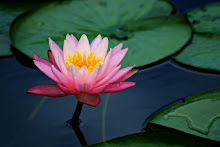Cateva pasaje scurte despre semnificatia imaginilor (=diferitilor zei) in hinduism (tantrism) : B. Bhattacharya - World of Tantra:
"Each aspirant under a threat of spiritual and emotional pressure creates his own deity and prostrates before the ideal so crystallised (in the image). [...]
As many individuals, as many individual ideas; as many ideas, as many ideals; as many ideals, as many dhyāna ; as many dhyāna, as many murtis (images). Images are not idols. Deprived of the eternal values that are attributes of the divine presence, idols are mere lumps that man creates to raise up on a false pedestal. [...]
Tantric images differ from mood to mood, from urge to urge, need to need; even from occasion to occasion. From the fierce forms of Chāmuṇḍā, Kāli and Nīla Sarasvatī to the milder forms of Lakṣmī, Sāradā and Prajñā-Pāramitā; from Viṣṇu, the sun-god, to Varuṇa, the water-god, and Śiva, the quiet static material image of absolute neutrality, every image is imbued with a subjective ideal, which if imaged successfully, holds the devotee's trying attention, and brings about the coveted concentration. This is just a method of sitting the mind free of all inhibited pre-thoughts and neutralising the world of the senses. [...]
This is the underlying secret of the many images of the tantriks, of the many ideals that aspirants nurse and adore. Each image represents an aspirant's soul-hunger concealed into a tangible form, so that he can establish a personal and rational bond between the outer form and the inner hunger.
[...] even the lover who wants to reach the divine liberation, identification of the absolute type, must determine the kind of love that appeals to him the most; responds to his inner personality the most. There need never be any hesitation in accepting that which fits, suits and answers an inner hunger."
Cateva puncte de reper: in hinduism (si budism), imaginile, statuetele ce reprezinta zeitati sunt utilizate ca suport de meditatii si in ritual. Cel putin in tantrism, prin practica sa, adeptul incerca sa se indentifice cu zeitatea aleasa.
